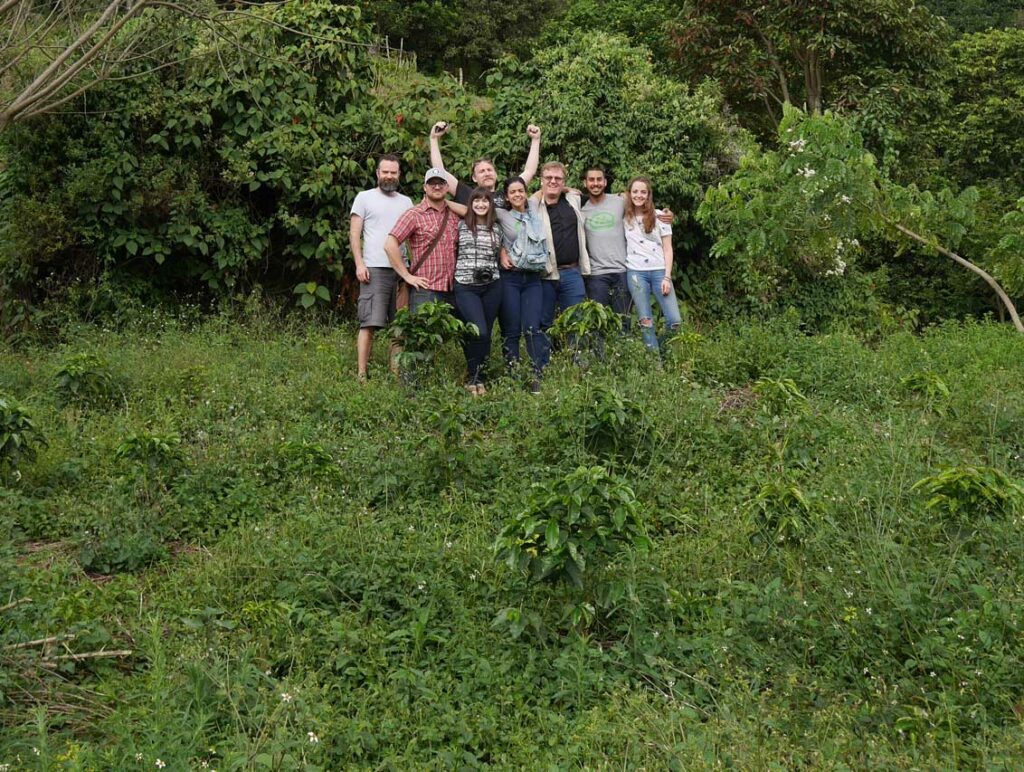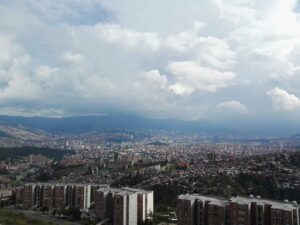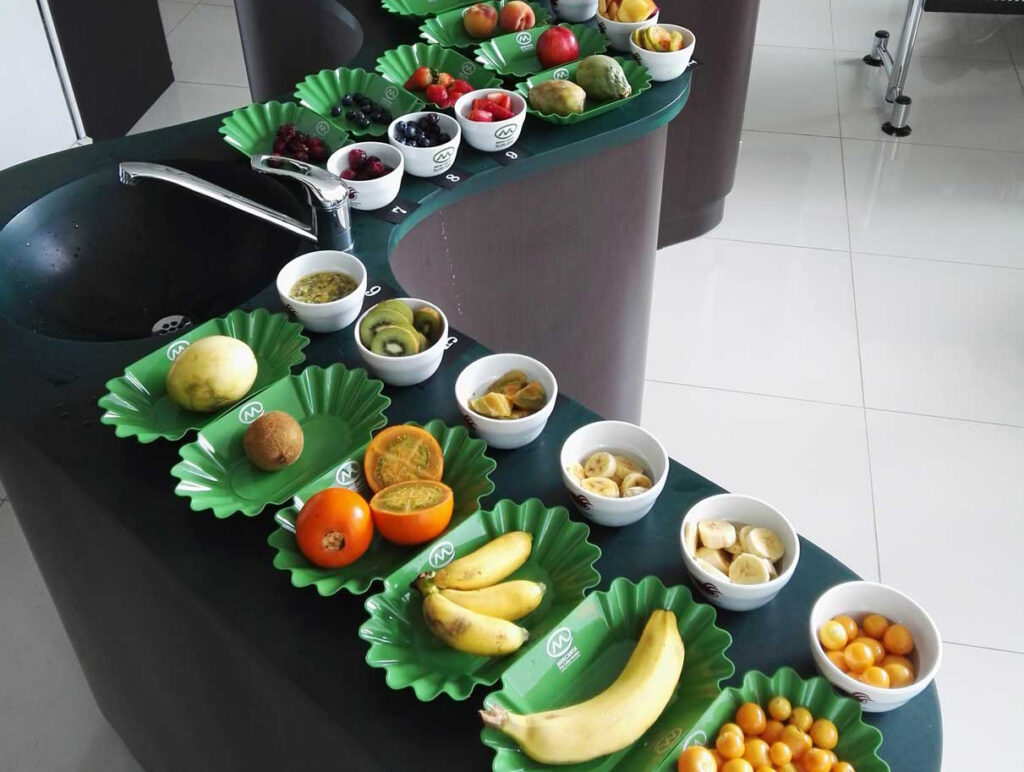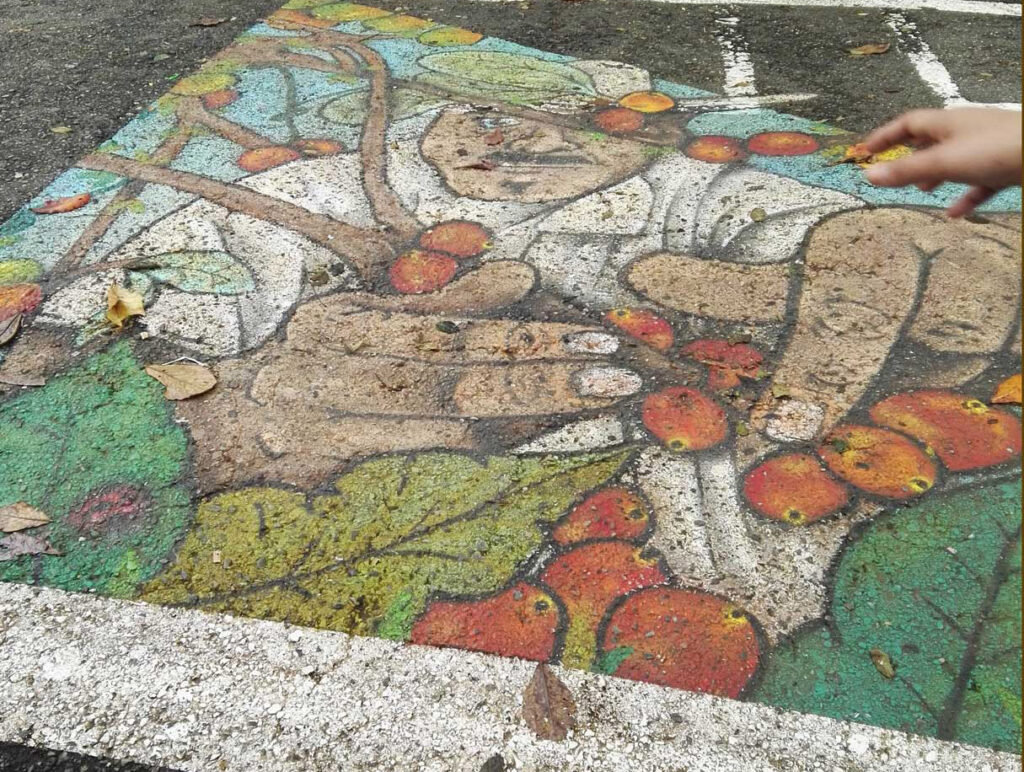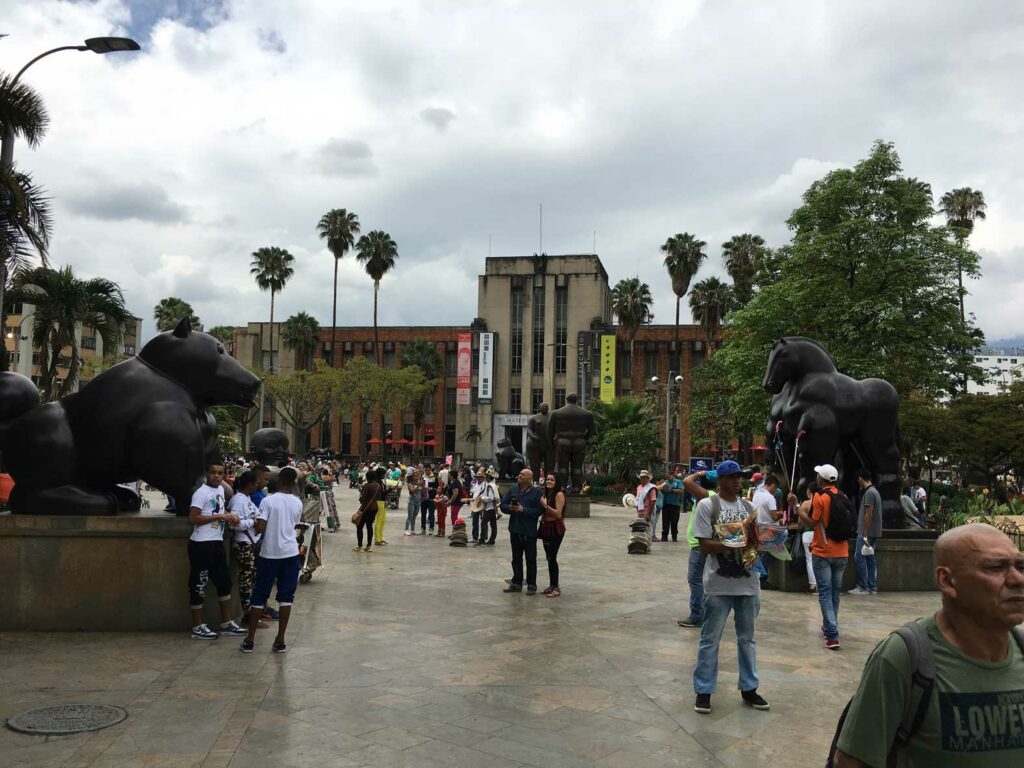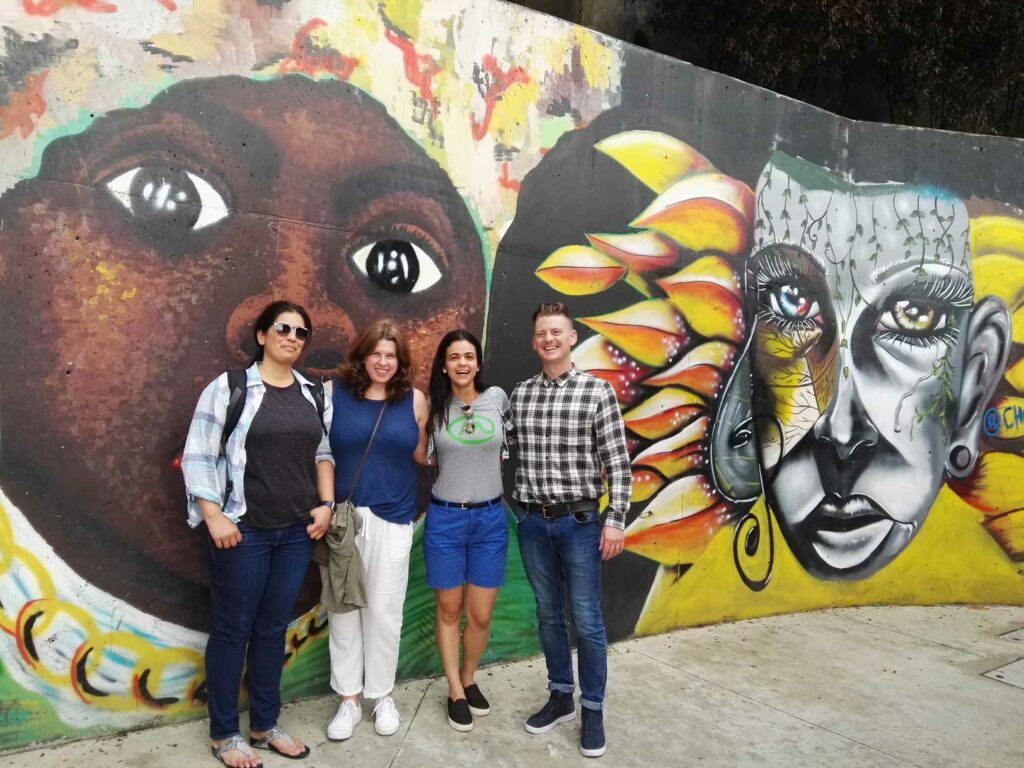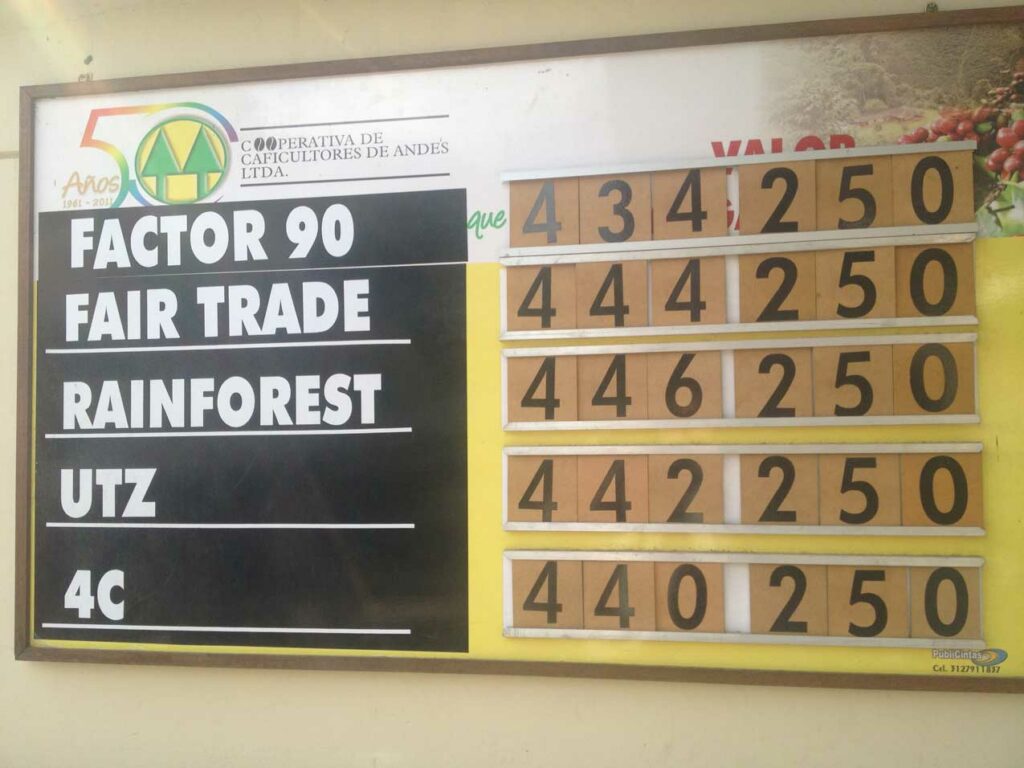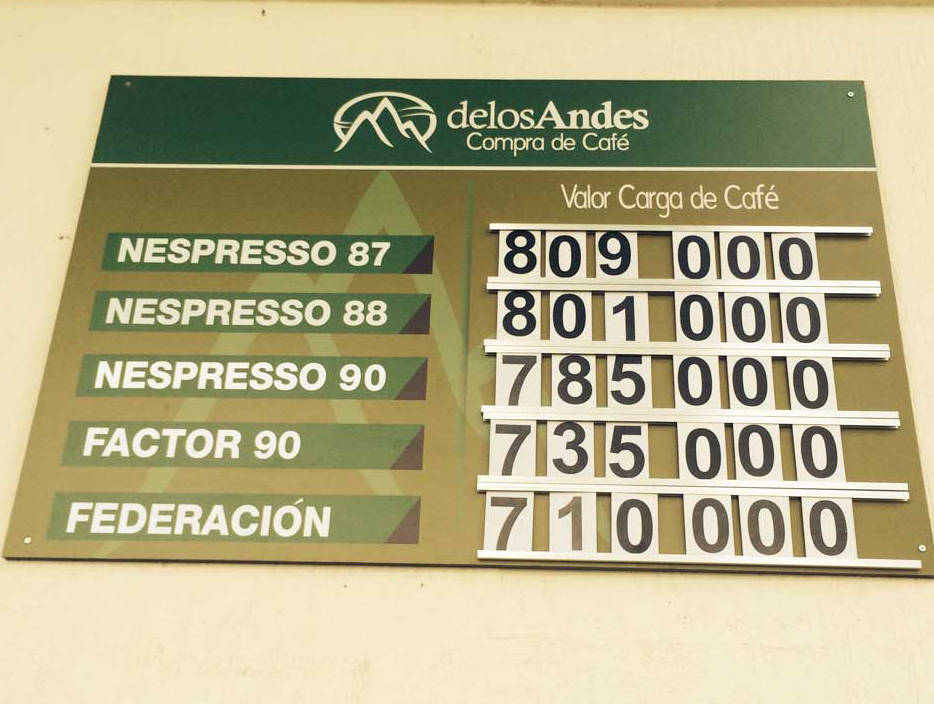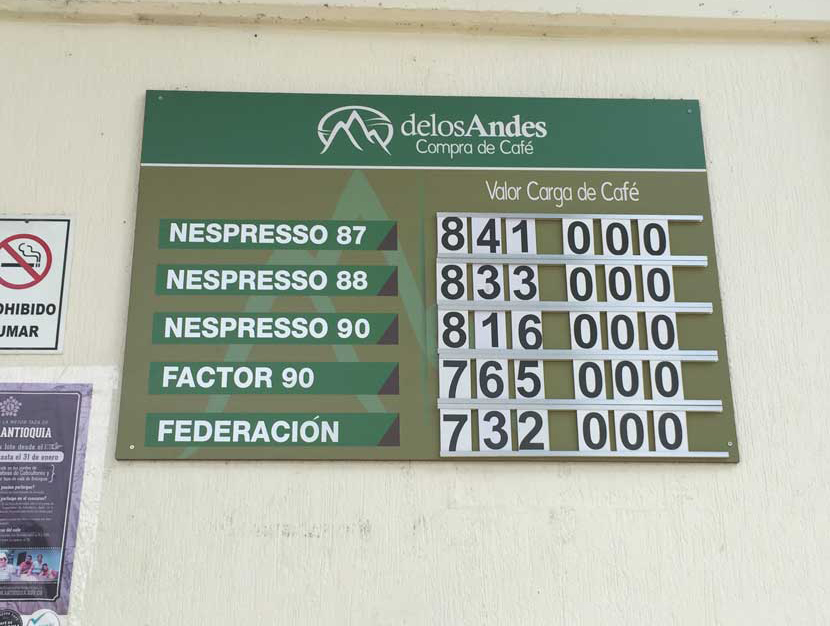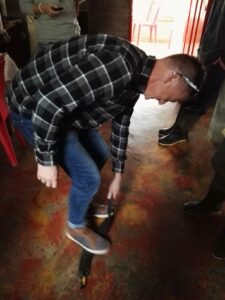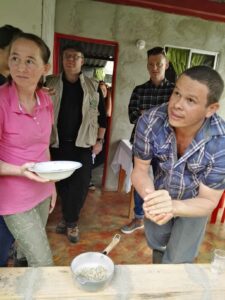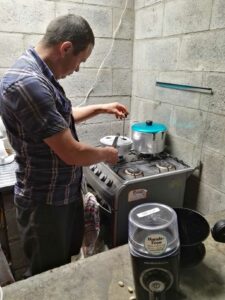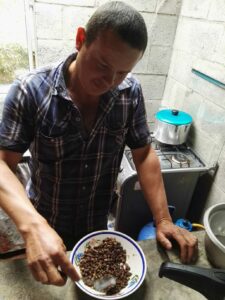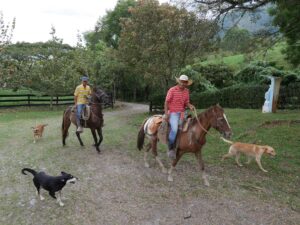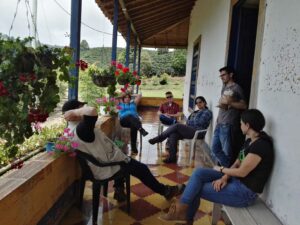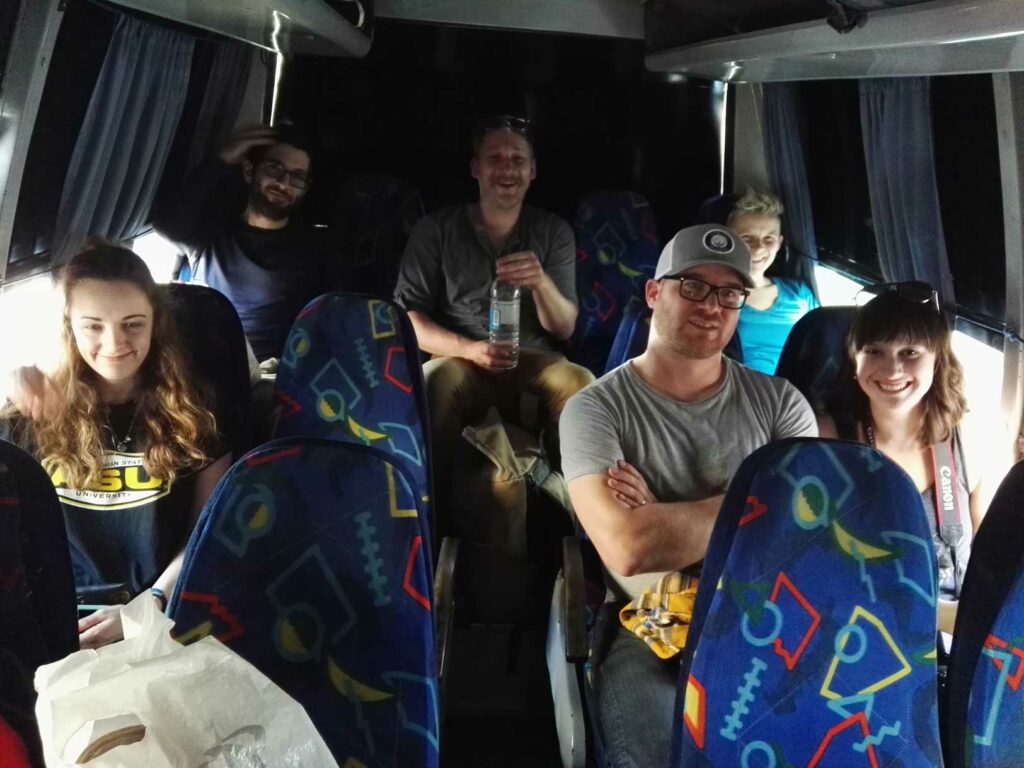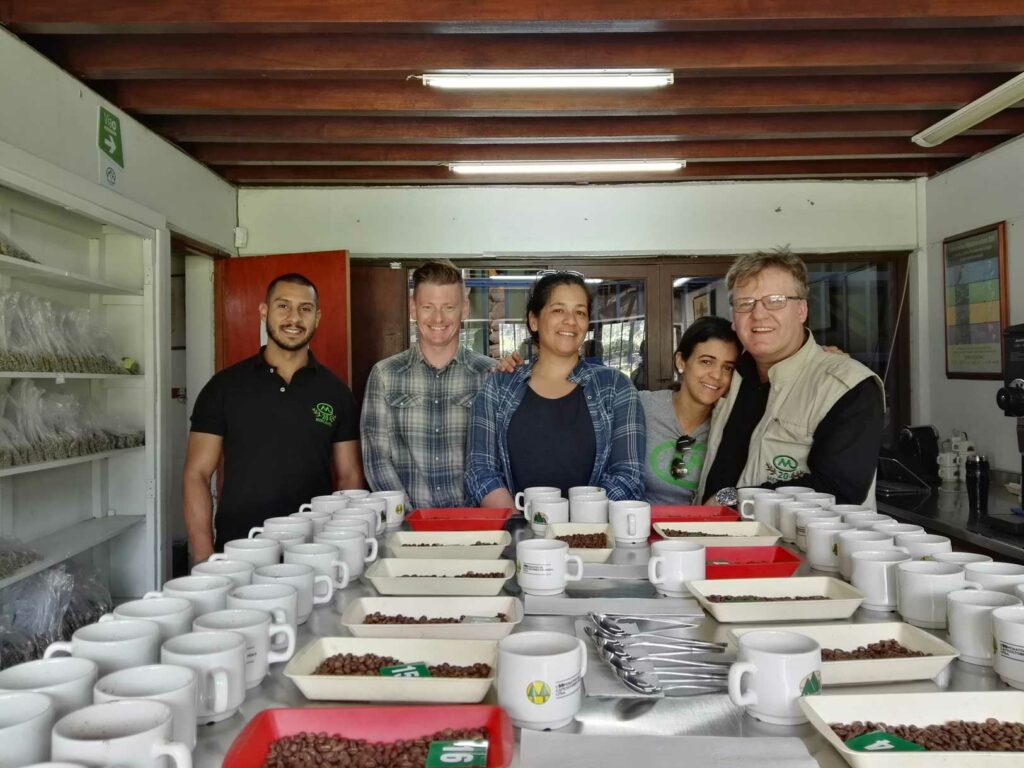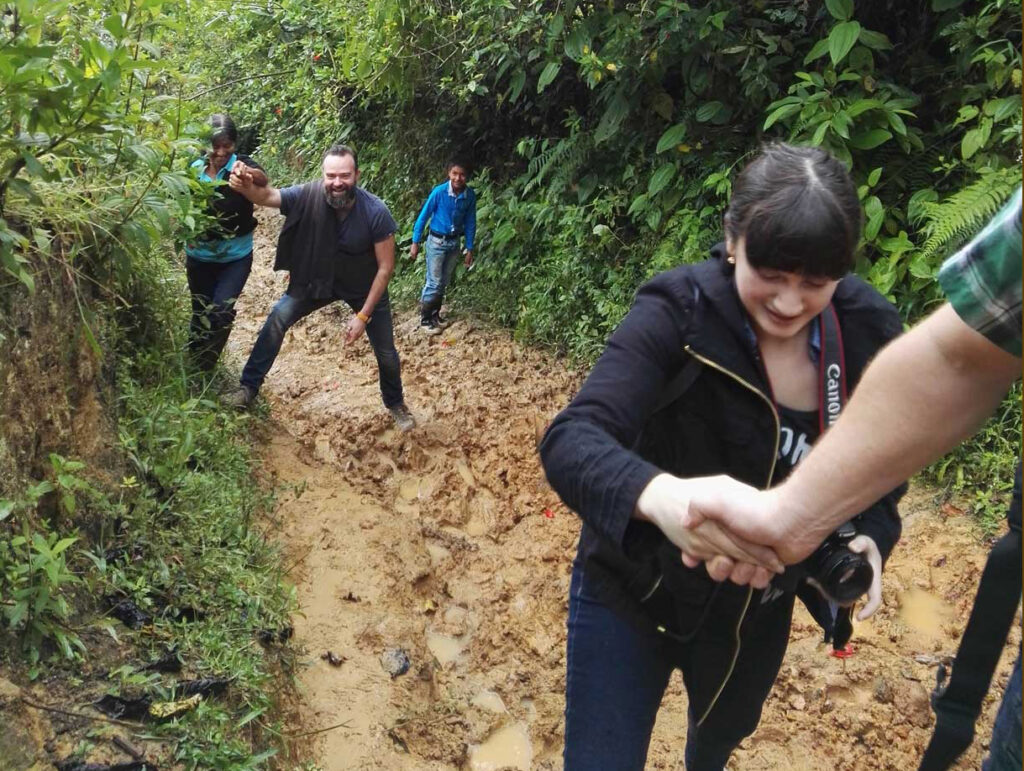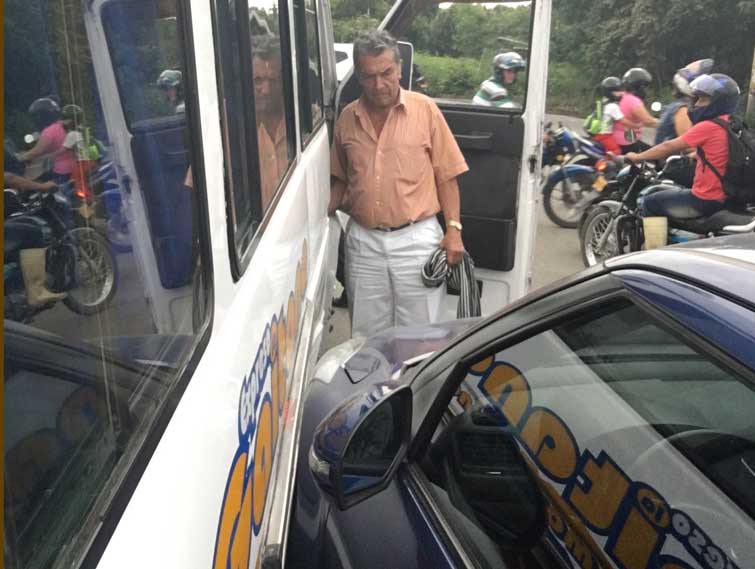January in Antioquia, Colombia, 2017: The boss’s perspective
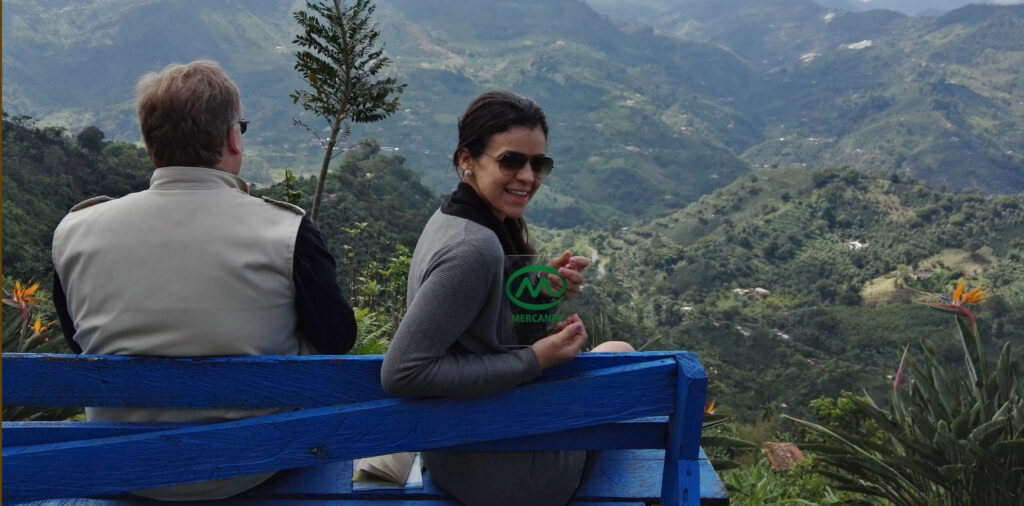
2017 marked the second year of Mercanta’s Jantioquia (January in Antioquia) – an event inspired by my own experiences in Antioquia some years ago.
When I first began visiting Antioquia in 2010, the department (Colombia’s largest administrative subdivision) had long been overlooked with regards to both coffee and tourism. At the time, Huila held distinction as the ‘quality’ hub for Colombian specialty coffee (based partly on Cup of Excellence results and on the fact that Huila is the largest producing department by volume in Colombia). While Antioquia (the number #2 producing department) has always had the requisite terrain, growing conditions, heritage and expertise to produce quality coffee, back in the day rather fewer people knew this or were aware of its potential.
Antioquia has experienced long years of social and physical isolation due to its topography and its associations with narco and guerrilla ‘terror’. While these factors have meant that it was often not an active participant in the many quality coffee driven initiatives of the early 2000’s, the department (somewhat like Texas in the USA) has a fierce independent streak due to its mountain redoubt that contributes to its unfilled potential for quality. Indeed, one of its greatest strengths is a Paisa (people from Antioquia) with a delightful ‘’Can Do’’ character and a strong pride in their homeland who are working today to build the region’s reputation for quality.
That is why Mercanta set up our office and coffee lab in Medellín in 2012, long before most people were talking about Antioquia specialty coffee. Today, as we predicted, this region has become a vast resource of fine coffees for our clients, a great place to visit, and one of our two (so far) origin bases (the other is in Guatemala). Visitors will see the familiar Mercanta coffee lab, and we have local expertise in the house with Juan Cano, our resident Coffee Hunter who is originally from Antioquia and knows Medellín like the back of his hand.
I have frequently described Medellín as the city furthest from its image and fame. In other words, some places are known to be fantastic and they are. Others are known to be terrible, and they are. What Medellín and Antioquia do is shock and challenge the mind and senses, being further from their fame and image (generally poor) than from their facts (generally excellent).
Having set up Mercanta Colombia in 2012, in what was once an unfashionable hinterland, it is very pleasing and satisfying to be able to welcome friends and clients from all over the world to share in our experience of this wonderful place. This year, we have had clients visiting from eight countries and counting. Fender-benders and other small mishaps aside, I believe all our guests came away from Antioquia with an impression that they did not expect when they arrived. From the city of Medellín’s giant valley – with some 3 million residents – to the coffee areas of Southwest Antioquia where large, medium and small farms cluster, there are views, landscapes and scenes to amaze.
Jantioquia week one kicked off with a city tour of Medellín. This is a ‘fully modern’ city whose metro system includes cable cars and escalators up mountainsides where babbling tourists share the same space swinging over the houses below with locals who are on their way to work and shopping. Early development of Medellín began in what is modern day ‘Poblado’ (today one of the city’s most salubrious neighbourhoods). A walk through the neighbourhood shows hip shops and restaurants and is always a great starting point for getting to know the city.

Going up!
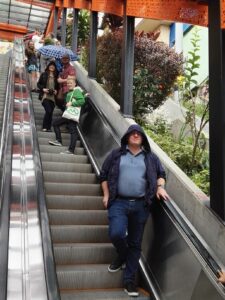
Going Down!
Our tour continued with a visit to Medellín’s famous escalator. Comuna 13 used to be one of the poorest and most dangerous neighbourhoods in Medellín, but thanks to different programs organised by the mayor’s office for social inclusion, the neighbourhood is now one of the most visited areas in the city. Features include street art and the second escalator in the world used for public transport, which stretches up the hillsides for some 384 metres (that’s more than 28 stories that residents no longer have to climb daily) .
Medellín is also a great centre for arts and culture. We enjoyed a stroll through the plaza lined with sculptures by the world famous artist Fernando Botero – himself born in Medellín. Street art also abounds here, sometimes even with a coffee-related theme borrowed from the nearby countryside.
In addition to cupping coffee, week one featured a ‘’fruit cupping’’ in our Medellín cupping lab, with a tasting of 40 or so fruits including many not commonly available outside of Latin America. The idea behind this activity was to widen our coffee cupping vocabulary; and to this extent I felt that it worked very well, as I deployed my new-found flavour wheel later during the trip.
Following our time in Medellín, we headed southwest into the coffee growing country around Jardin and Andes. The views here are stunning, and our partners here are producing diverse coffees all of which are excellent. Over the course of two weeks, we visited with our guests many different Antioquian farms, all of which produce exceptional coffee.
Specialty coffee production (and sourcing) never fits neatly into a box or template. Unsurprisingly, there is a great diversity in farm structure and type in Antioquia, as well. To begin, there are small, medium and large individual family and corporate farms. Many of these are members of Cooperatives. Cooperative membership does not generally oblige one to deliver coffee to the Coop; however, the Coop often provides a wealth of agronomical and technical support to the growers who are members and who deliver coffee, as well as also providing a buying point for parchment coffee.
There are also many ‘’associations’’ – smaller groups than coops, frequently neighbours and close associates. These associations are providing Mercanta and our clients with coffees not only from Antioquia, but also further afield as we expand our reach into Cauca, Huila, and other departments maintaining the same ‘’premium price for premium quality’’ message.
Most coffee in Colombia is traded, delivered and/or sold locally as pergamino (parchment). Increasingly some larger companies (such as Nespresso and Starbucks) have set up cherry receiving stations in the coffee areas; however parchment remains the way most coffee is delivered locally.
Almost uniquely in the coffee world, the Colombian coffee grower has a virtually guaranteed market for his/her production, be it a private mill, the Federación Nacionál de Cafeteros (FNC), a local Coop or one of the many other intermediaries and parchment buyers who operate locally. It bears repeating that this guaranteed market for the growers’ product is virtually unique. In most coffee growing regions in other parts of the world, cash payment for parchment at point of delivery is not something that can be taken for granted. In Colombia, however, prices are clearly posted – much like prices of gasoline / petrol – at the many bodegas and receiving stations dotted all over the countryside in the villages and veredas of the coffee zones. Roll up with your parchment, have it graded and assessed on delivery and you will get paid immediately and commensurately to the assessment received. Regrettably, this posted price system also serves to commoditise quality, reducing it to a ‘factor’ (‘factor’ is how much parchment you need to make one 70 kg bag of exportable green – 90 kilos is standard) and ensuring any producer meeting a minimum ‘factor’ will get x price. The base price changes frequently, making traders out of even the smallest producers who often hoard their parchment to take advantage of higher base prices on a given day.
Mercanta has been able to disrupt this to a small degree. The issue with this sort of pricing is that the base number in all of these cases will always be pegged to the commodity price – and commodity market linked pricing formulas do not work for the producer nor for the sustainability of the industry in the long-term. Mercanta is one of the few importers who manages all our origin purchasing at OUTRIGHT prices with no ‘to be fixed’ contracts connected to the commodity market price. We pay only outright prices and never less than $1.80/lb for specialty Arabica coffee. We track our average purchase prices at origin annually, and generally this number is 30-40% over our guaranteed minimum FOB origin price. Programmes that support origin coffee prices without linkage to quality in the cup perpetuate overproduction. A support price, given only because people happen to grow coffee, is a subsidy, however well-intentioned this subsidy is.
Our outright pricing system, by contrast, ensures long-term sustainability by covering the cost of production and rewarding those farmers producing higher quality coffee with long-term sustainable prices.
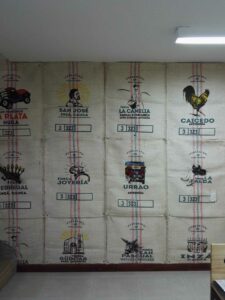
Pergamino Exporters Bag markings are some of our favourites
What Jantioquia shows to our international cadre of specialty coffee roasting clients is how successful our sustainability guarantee and sourcing method has been in Colombia. Our supply chain is constituted from a foundation of small, medium and large producers – fully traceable and identifiable (and in many cases friends) – built through quality- and relationship- driven purchasing. We are now distributing Antioquia specialty beans in more than 30 countries, and our producer partner list has grown to extend from our great friends the Echavarria Family (La Joyeria, Veracruz, San Pascual, and La Camelia) and the associated Pergamino operation (also the name of and the same owners as the best cafe in Medellín) to an additional host of small and medium sized producers from Antioquia, Cauca, Huila and Nariño. We have a strong farm-specific business with our friends at Cooperandes (familiarly known in Mercanta as ‘Candies’) that began with 2-3 Coop Andes producer member farms and has now grown to nearly 20 farms, all part of the Coop’s specialty differentiation programme and many from which we purchase regularly. [Cooperandes photos]
There were developments (in fact, many developments) this latest trip as seen through the eyes of someone very familiar with Medellín but who only sees the city once or twice a year. The city is booming, as I thought it would be when I visited all those years back. There are 5 new office blocks, a new Hampton at Hilton Extended Stay Hotel, and three brand new Starbucks all within 500m of our Medellín office and coffee lab. In fact, all the building work is rather out of control. But Medellín now is firmly on the tourist map, and deservedly so. Its climate and lifestyle are very pleasant, but I can see unwelcome changes even in the past five years. This, I suppose, is called development, but I am not sure that Krispy Kreme Doughnuts, Hard Rock Cafe and Starbucks all one next to the other across the road from the office is ‘’progress’’.
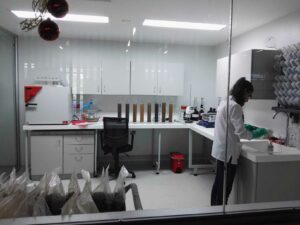
Cooperandes New Lab
On the coffee side of things, we saw an amazing new ‘’white lab coat’’ soil and leaf analysis coffee lab at Cooperandes – very impressive indeed. Another small thing that I was delighted to see was the small stovetop, frying pan ‘roasting kit’ that the coop had made available to producer Ramon Alexander at Finca Las Heliconias. [photo – ramon] He patiently prepared the coffee (which was in parchment), removed the parchment in a bicycle tyre inner tube contraption (this method is used widely to check moisture content) and roasted his beans very capably on his stove. The resulting coffee was genuinely excellent, a testimony to the coffee producer now understanding the value and worth of their own production AND a moment of pause to reconsider the crazy machinery race in roasting, grinding, and espresso making. One can compare this virtual war footing on who has the absolute latest and ‘’best’’ piece of kit with a man at 1,900m in the middle of nowhere preparing a completely decent filter coffee on a stove top and in a bicycle tyre total cost US$10.
The Echavarria family farms (La Joyeria, Veracruz, Camelia, San Pascual) are a model of ongoing improvements, from constant developments in harvesting, processing, staff and picker welfare through to export milling and preparation at the La Estrella mill near Medellin. The non-family-farm export business (Pergamino), which has long promoted and provided a market (internal and external) for quality differentiated small holder lots, is also expanding into new departments and is already operating in Cauca and Huila, where we anticipate new lines from Pergamino this coming season, including a growing stable of Organics. Week two saw our guests visiting some of these remote farms in both Cauca and Huila, braving the rain and the mud to get to know these extraordinary farmers and farms. Cartel Coffee Lab, from Phoenix AZ, has even become directly involved in helping one of these family’s efforts, holding events to raise funds to help the family further invest in their future.
We are now delivering Echavarria Family coffees to 25+ consumer markets, a bag or pallet at a time. The quality, consistency and traceability of these coffees is even more evident to the Jantioquia client visitors who have had the pleasure of getting to know the family and their farms with us.
It’s natural that far more clients would like to come on the Jantioquia trip than can be accommodated; even when we have now expanded it to two ‘’cycles’’. We have a rich experience in Field Trips, and for a whole host of reasons, there is a ‘’perfect number’’ of visitors and guests that will ensure a great experience for everyone, considering the local internal transport, accommodation, and farm visits in tricky terrain.
These words from a visitor to Jantioquia 2017 sum it up, and inspire us to develop this annual programme further in coming years.
Morning all!
Now the dust has settled after my week in Colombia, I just wanted to let you know how amazing the whole trip was for me.
The organisation was incredible, and what you guys managed to pack into five days was spectacular. The people I met, the places we visited, the food, the information, and most importantly how much I actually learnt about coffee farming and processing has armed me with a new passion and confidence.
I really can’t thank you guys enough for the opportunity and for being the best hosts – it’s been a trip of a lifetime for me.
Looking forward already to Jantioquia 2018
